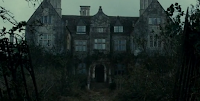Diegetic - within the scene
Non Diegetic - added afterwards in post production
Crescendo - build up of sound/music
Diminuendo - the gradual 'die away' of music
Sforzando - sudden sharp sound
In the opening credits for the film Jaws, the iconic non-diegetic theme music is played whilst the camera is pointed in the sharks point of view, relating the two together. Crescendo is used during this as the music builds up, until it reaches its peak and the music dies away. In the first scene, the teens in the film are sitting around a camp fire at the beach where they have isolated themselves from any safety, the diminuendo music implies this. This is also diegetic music. For example, the guitar, talking and laughing. Later on in the scene, when you realise the girl is going to be attacked, the music begins to crescendo again, and when she is attacked, fast, high pitched music is used to mimic her fear, screams and the water.
In the restaurant scene from the film, The Godfather, diegetic music is used when Michael shoots Sollozzo and McCluskey. The sound of a train crescendos behind them and gets louder and louder when he is preparing to shoot, and when the train is at its loudest, he kills the two men.















